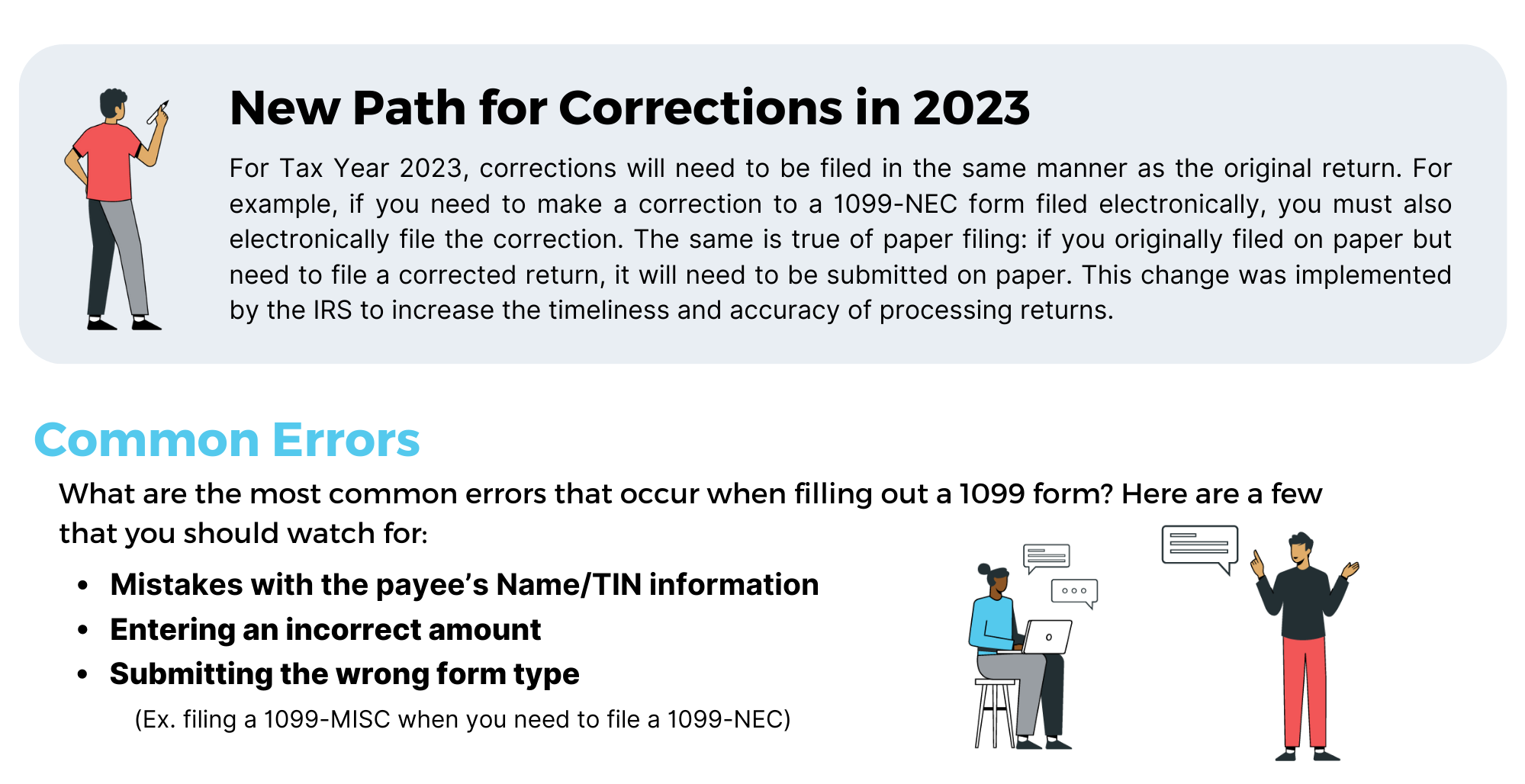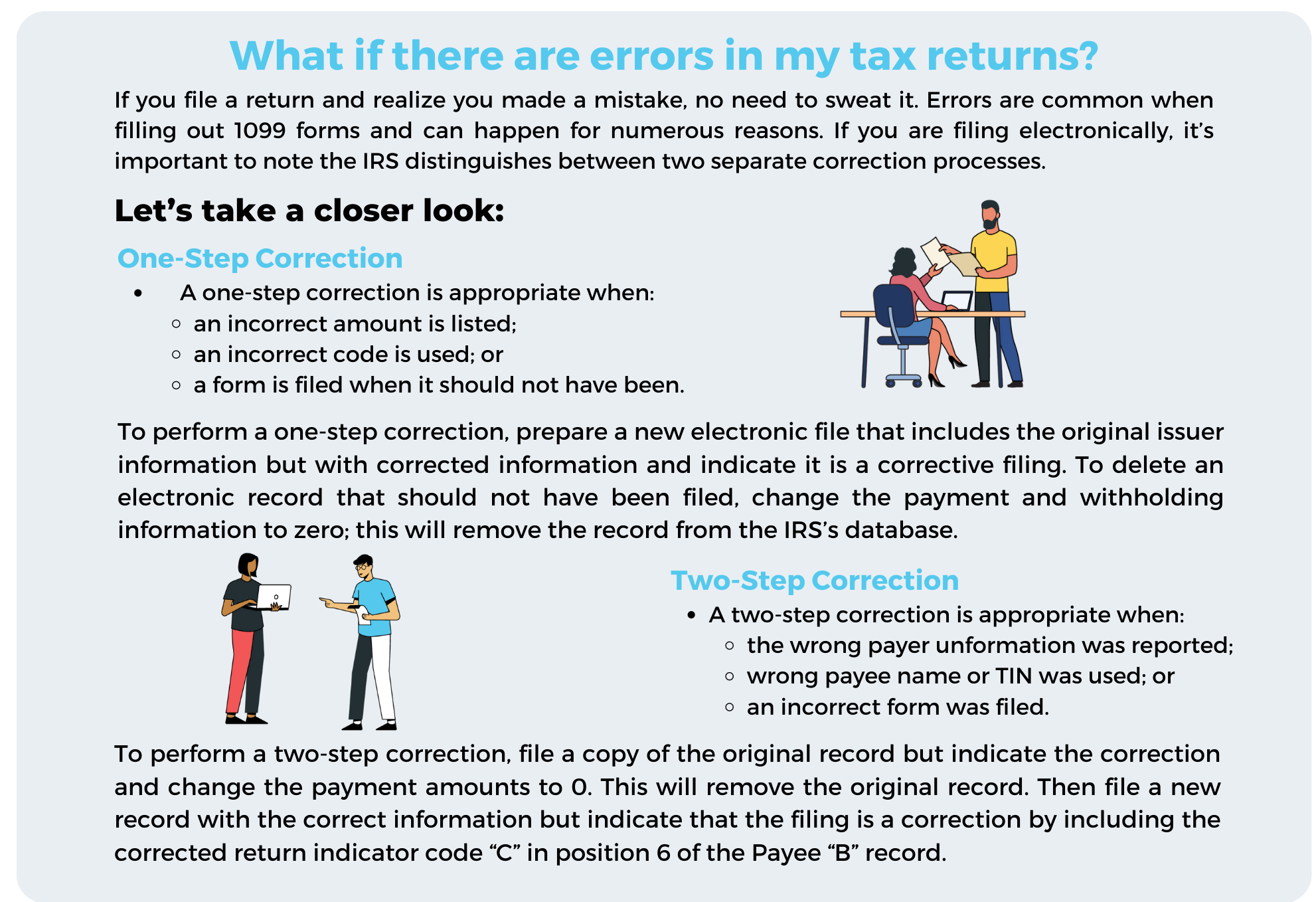The IRS processes millions of information returns each year, many of which require filing a corrected return. For tax year 2023, the IRS has changed the way in which corrections must be filed. Failure to file your corrections in the proper method can result in potentially costly penalties and extra time-consuming rework. Here is our guide to filing corrections this tax season.


Additional details on the specifics to perform these corrections can be found in IRS Publication 1220.
What can I do to avoid corrections?
There are a few things you can do to help avoid needing to deal with corrections. Perhaps the most beneficial action you can take is to conduct proactive Name/TIN matching throughout the year. It is considered best practice to conduct a Name/TIN match each time you onboard a new vendor. By verifying vendor Name/TIN information during onboarding, this gives you time to request a new, updated W-9 from your vendor, should there be any errors in the original W-9 returned to you. Another important step you can take is to validate the address of your payees. This can help minimize errors in the data on your filed returns and minimize the likelihood of needing to file a corrected return.
If your business is currently filing original returns electronically through your accounting software, you will want to ensure that your provider can also file any corrections in the same manner. If your accounting software does not support the electronic filing of corrections, you may need to find an alternative provider. eFileMyForms makes it easy to file your 1099 returns and manage any corrections so you stay compliant with these rule changes for tax year 2023. Visit our 1099 Services page to see how we can help with your 1099 filings this tax season.
